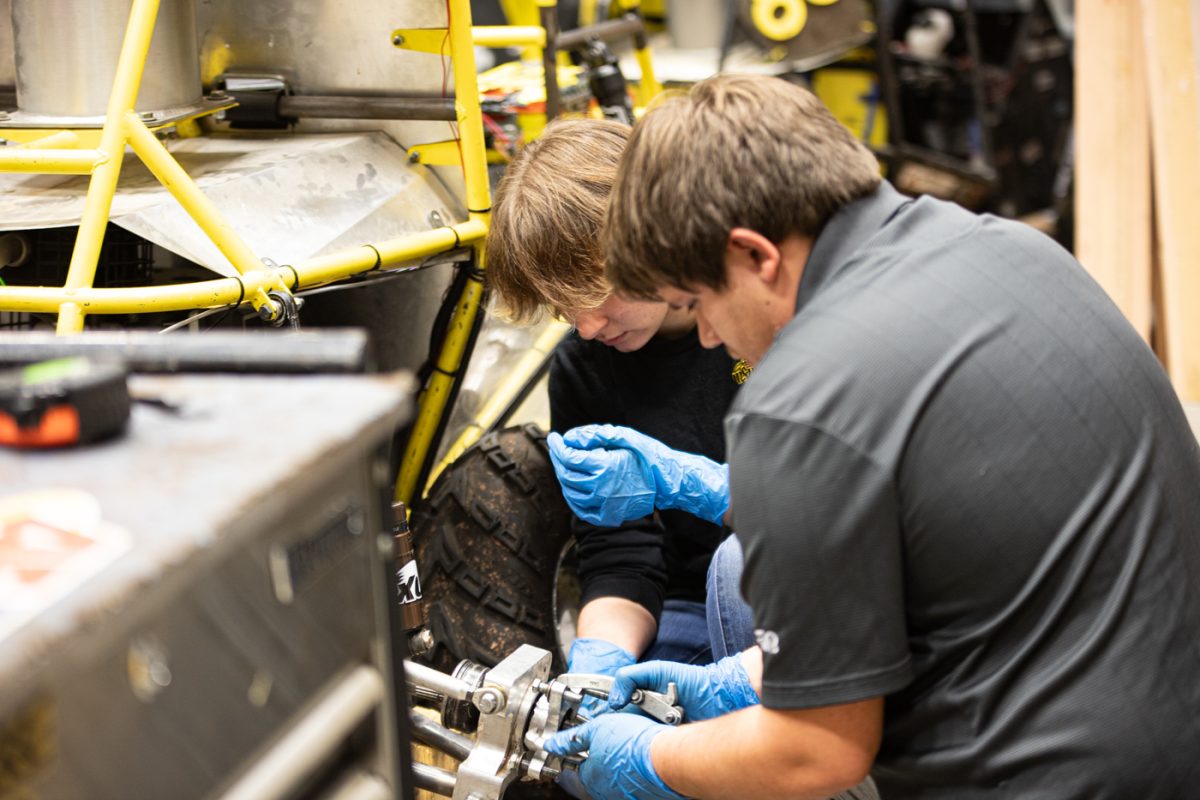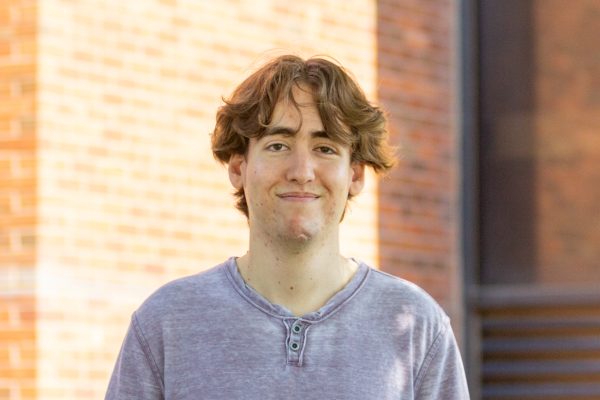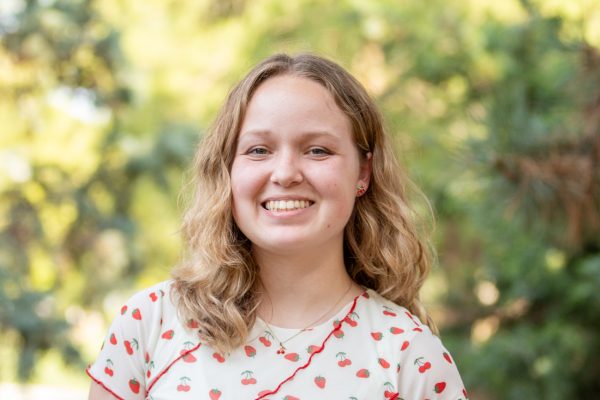Inside the Shocker Racing workshop, they still run equipment coded to floppy disks.
Built in 1996, their outdated mill cutting machine is just one example that Shocker Racing Baja SAE and Formula SAE club members cite as evidence of persistent underfunding from the Student Government Association (SGA) and the College of Engineering.
The two clubs build cars from scratch that they take to competitions against universities from around the globe. Alex Spear, the Baja SAE shop director, said students have used their experience with the club to acquire internships.
“It’s a great talking point for people coming into engineering firms,” Spear said. “From this club, they gain a lot more knowledge than just in school. And that’s what companies want to see, that hands-on knowledge.”
The clubs take some of their most active members to competitions across the country. There, their car is judged on tests such as brakes and acceleration before an endurance test, either on a four-hour off-road track for Baja or a 15-minute sprint for Formula. Finally, they are graded on a business presentation where they examine their budget and attempt to sell the car.
The travel and equipment costs of the clubs add up. For fiscal year 2024, Baja SAE and Formula SAE requested $42,343.60 and $75,000, respectively, from SGA, but only received $18,270 and $19,260. Both clubs described their budgets as being significantly less than most other competitive universities.
Formula SAE President Beau Rodriguez said the money the club received from SGA is the “bare minimum” to cover the costs of building their car, which leaves out funding for traveling to competitions.
“Competition costs are a big part of what we’re going to try to work on this next semester,” Rodriguez said. “In the past, we have been able to kind of squeak by with money, but it’s been really on the knife’s edge.”
In 2022-23, Formula SAE spent $62,451 on parts and $21,290 on travel. The clubs seek out and receive outside sponsorships, usually in the form of discounts on parts. However, Baja SAE club treasurer Hannah Leslie called the lack of SGA and Engineering funding a “perpetual disadvantage.”
“Because we’re underfunded, we can’t do as well at competition compared to other teams,” Leslie said. “Then, outside funders don’t want to fund us because we’re not doing well. It’s this terrible cycle of, we’re always going to be below where we could be.”
The lack of funding has lowered the number of competitions Baja SAE is attending this year as well as the number of people they take to competitions. Cole McDaniel, Baja SAE’s Chief Engineer, said their limited budget also prevents them from updating and purchasing equipment that could lower their long-term costs.
“Having a full budget, it would be to buy new machines and equipment that can help us do more stuff in-house,” McDaniel said. “A lot of that in-house is cheaper because when you outsource, the material isn’t normally the most expensive; it’s the time you have to pay for labor.”
Leslie said SGA and the general public on campus don’t have a full understanding of what goes into their budget. A question the Baja and Formula SAE clubs both say they received from SGA is why they don’t share and reuse parts for the cars. However, Leslie said that isn’t viable because of equipment damage, rule changes and the lack of crossover in the parts necessary for Formula and Baja cars.
“It’s like swapping parts from a go-kart onto a Ford Ranger,” Leslie said.
The clubs generally expect not to be fully funded by SGA because of budget constraints. However, Baja and Formula SAE receive no funding from the College of Engineering. The College usually helps the clubs find outside funding rather than providing it directly, which club leaders say is abnormal compared to other universities.
Rodriguez said the Engineering College told Formula SAE they would consider providing direct funding three to five years from now. For now, he claimed the lack of funding is a bad look for the university.
“When we do well at a competition, it directly affects the school on a national level as well as a worldwide level,” Rodriguez said. “I think it’d be wise for the school to support us more because this is a direct reflection on them.”
Rodriguez called the future of Formula SAE “a little dark” without Engineering funding. However, he said the club is focused on performing the best they can, even with their limitations.
“I expect us to perform well at competition and hopefully break through that top 50 to show that we are growing as a team,” Rodriguez said. “So that will help attract some more sponsorships and things like that. But it’s really hard to see the funding go away, especially when we’re on the come up from getting better and better.”






